RULES is rules, but sometimes they get out of control and suck a lot of the fun out of things. And lately in motorsport, it’s the rules protecting the cubic dollars tipped into modern car-racing that suck most deeply. Did you see, for instance, Scott McLaughlin getting fined for taking a poster onto the podium recently? This is what we’re doing now?
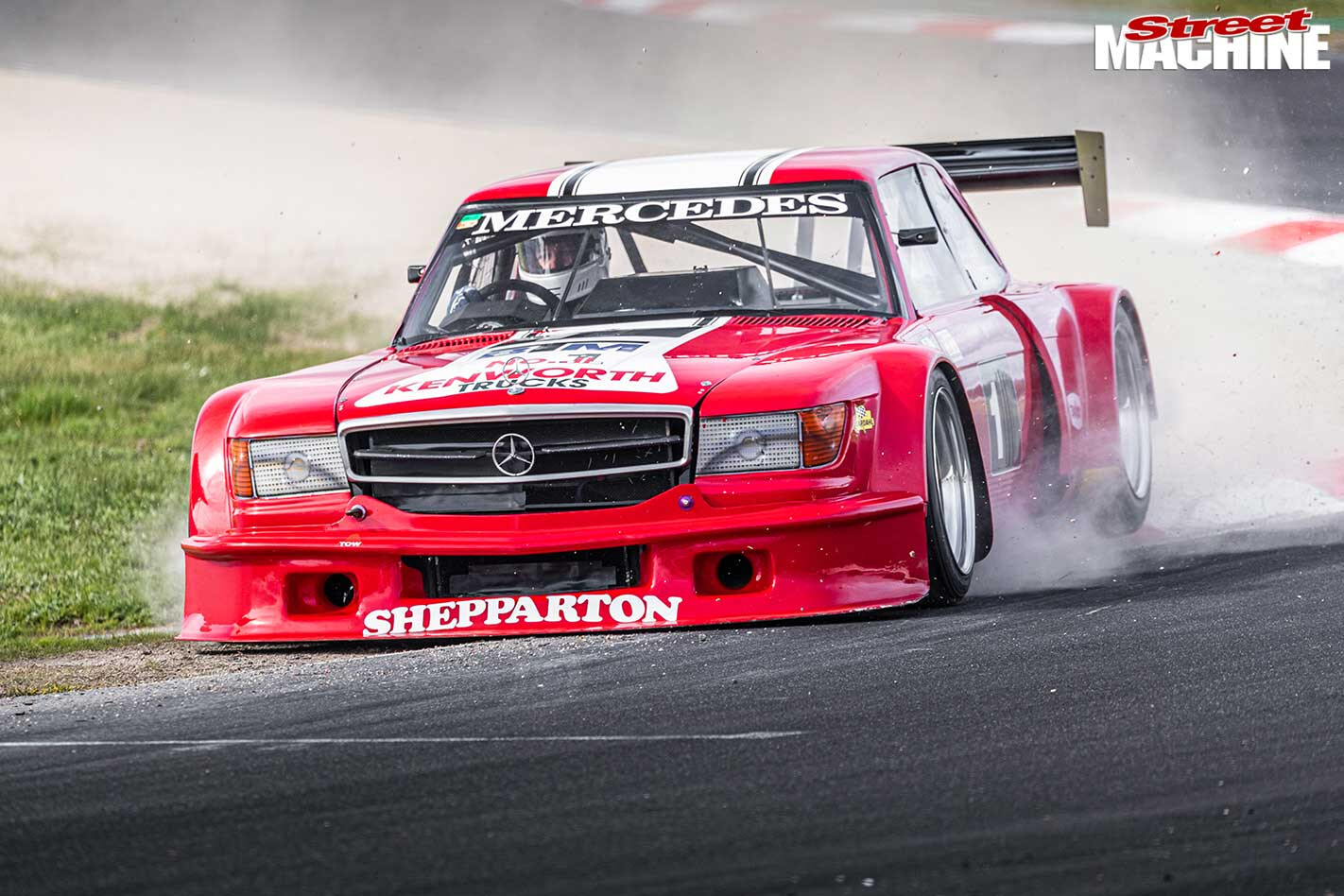 This new PC era is also why the pinnacle (so they tell us) of four-wheeled sport, Formula One, now amounts to slot-cars driven by robots. Even in our beloved Supercars, not a single car runs an engine, gearbox or diff (or anything else) that you or I can buy in a new road car. Reality check, anyone?
This new PC era is also why the pinnacle (so they tell us) of four-wheeled sport, Formula One, now amounts to slot-cars driven by robots. Even in our beloved Supercars, not a single car runs an engine, gearbox or diff (or anything else) that you or I can buy in a new road car. Reality check, anyone?
Rules and restrictions are everywhere and just about every category has become corporatised, with sponsorship money calling the shots on both sides of the pit wall.
It wasn’t always like that. Oh no. Step back a few decades and you had Jack Brabham designing his own Formula One car and winning a world championship with it. And he could do it because motorsport was yet to become a money factory; there was still room for people with imagination and genius to make their mark. Can you imagine Lewis Hamilton skinning his knuckles on a car after hours? (Then again, can you imagine Sir Jack with neck tatts?)
Simon Pfitzner’s Mercedes-Benz 450 SLC
Locally, perhaps the greatest expression of ‘the mad scientist goes racing’ came along in the 1970s in the form of Sports Sedans. These often backyard creations were built on the simple rule that there were no rules. Oh sure, there were safety regs you had to meet, but fundamentally, if the end result looked vaguely like a road car, you were a race-car engineer.
Okay, there were some rules, but they were never designed to reduce the amount of imagination you could use or the degree of crazy involved. So, a Sports Sedan builder could swap metal for fibreglass, glass for Perspex, shoehorn in whatever production engine, cylinder count and capacity they wanted, move the wheels to new locations, put the driver in the back seat, put the engine in the cabin (no smoking near the injector stacks, mate), make it as loud as possible, run monster slicks or huge brakes, and just generally take it to the limit. How’s this for a rule: A front-engined car had to keep the engine in the front half of the race car. Still plenty of wiggle room there. Sports Sedan is probably the only category where cheating was never a thing – you can’t break a bunch of rules if there aren’t many.
Letting backyard engineers off the leash also produced some incredible machinery, things of wonder such as a Volkswagen Type 3 fastback with a mid-mounted Chevy V8. Or a Mercedes-Benz coupe that was more or less a Formula 5000 open-wheeler with a plastic body on top. You couldn’t make it up. Except these blokes did.
The earliest Sport Sedans tended to retain a fair proportion of the original shell, although right from the off, there was plenty of engine swapping and moving stuff around within the car’s footprint. And from there it only got crazier until we ended up with spaceframe construction, forced induction and electronic management. But only if you wanted it. You could always plonk a Webered-up two-litre engine in your Escort, cage it out and call it a Sports Sedan.
The engineering ranged from magnificent to godawful, and the end results covered the full spectrum from Street Elite-standard to drone-strike-on-a-Repco-store. But when you think about it, there’s a lot in common between the philosophy of making unrelated parts work properly and, say, the classic pro street movement in street machining, or the more modern pro touring vibe.
And don’t go thinking these weren’t fast cars. Yes, they had hairy backsides, and they weren’t always easy to drive, but they were crazy-quick and many of them would have given a front-running touring car of the day a big black eye. In fact, many touring cars, once they’d reached a certain age, were converted to Sports Sedans. They attracted some gun steerers, too, and everybody from Moffat to Richards, Bowe to Jane, Brad Jones to Gricey has had a crack at these monsters.
Over the years, Sports Sedans have evolved to use newer tech and tap into newer makes and models. But the magic of not having any regard for performance parity, nor giving a toss about attracting corporate quids, has meant that the category is, amazingly, still around, still producing new cars and still dragging the crowd to the fence on race day. And still off the chain.
These days, the old stagers have a class of their own. It’s called Group U, but it amounts to Sports Sedans that ran from those very early days up to the end of 1985. You can run any car with a logbook from that era, but, just to show that rules should be guidelines only, an accurate replica of a period Sports Sedan can also run as an ‘invited’ car. Mint!
The cars at the 2019 Winton Festival of Speed in early August typified the variety of makes and mods to be found in Sports Sedan; here’s a sample of what we found, from mild to wild.
Myles Bond
1978 Ford Escort RS2000
If you’re old enough, you’ll remember this car. It was a range of different colours back then, powered by a 6.0L Chev and usually driven with great skill and daring by Mick Monterosso. These days, under new owner Myles Bond, the Esky runs an SR20 Turbo engine with as much as 680hp on full boost of 30psi. Crikey.
The little Ford uses a torque-tube housing the driveshaft, mated to the Hewland transaxle, so it was a bit radical in its day. But it’s also a bit old-school, and despite its appearance it still uses a monocoque (rather than spaceframe) construction. As an example of how rad monocoque cars could be, the RS2000 is front and centre.
Myles reckons the plan now is to learn how to drive the thing and then, maybe, reinstate the 6.0L Chev V8, returning it to a layout more familiar on a Formula 5000 car, and, of course, its history.
Bevan Edmunds/Bill Govett
1962 Ford Anglia 105E
A race car since 1984, this Anglia has been owned by mates Bevan Edmunds and Bill Govett for only a couple of years. But the car’s history goes back a lot further, and it was originally owned and built by Sports Sedan legend Barry Bray.
At one point it had a Cosworth four-cylinder fitted, but these days Harry Potter gets around thanks to turbo-rotary grunt. The 13B runs fuel injection, there’s a gearbox from a Mazda light-commercial, and a diff from a Toyota HiLux. Even though the rotary is tiny, it’s still been set back a few inches, but Bevan reckons the folks who modified it along its journey weren’t always craftsmen: “They certainly didn’t have an angle-grinder back in the day, ’cos they didn’t grind down any of the welds we found!”
This car comes from a time in the evolution of the Sports Sedan where spaceframes were beginning to replace monocoque construction and the era of rotary power was just starting to hit boost.
Ian Baird
1957 Austin A30
Imagine this car in blue with a yellow stripe over it. If you’re thinking Peter Brock’s famous A30, you’re dead right. In fact, Brock’s Austin eventually morphed into a Sports Sedan, but not while Pete Perfect was running it. Ian Baird’s A30, meanwhile, wasn’t logbooked as a race car until 1975, but it retains the elements that were state-of-the-art back then.
Instead of the Holden six in PB’s A30, Ian’s runs a 2.0L four-cylinder from a Datsun Fairlady. The close-ratio gearbox is from the same make and model and the diff is pinched from an Escort. The car is a terrific representation of an era in Sports Sedan racing before off-the-shelf race parts were common.
It’s a mix-and-match deal with Mazda, Torana, Austin-Healey and Datsun suspension and brake parts, and the Datto mill set back about 300mm. “It’s a real wrecking-yard special,” Ian reckons.
Mark Sully
1970 Holden LC Torana GTR
It looks like an LC Torana that’s been fattened up for eating, but Mark Sully’s Historic Sports Sedan sounds like Thor having a bad day and goes like it’s just been shot out of a cannon. The 308 runs a four-barrel, Muncie and nine-inch, but the amazing part is that this car has never been road-registered.
Spending all its life as a race car means it’s been through a few changes, but the trim it’s in now is representative of a time in Sports Sedan racing where engines started to go big.
“You pretty much hang on and point it,” Mark says. “It’s a real handful with a short wheelbase and those fat tyres. It loves swapping ends.” Which is exactly what it did in the last race of the weekend, smacking the Winton wall.
Technically, the car is an example of early thinking, with the engine set back just a couple of inches and the guts of the bodyshell still all Torana metal.
Simon Pfitzner
1978 Mercedes-Benz 450 SLC
If there’s a movie-star Historic Sports Sedan, it’s this Mercedes-Benz 450 SLC. At its latest hit-out at the Winton Festival of Speed, there wasn’t a single five-minute period when it wasn’t surrounded by star-struck fans taking photos of it or dads telling their kids about the big red mutha. And guys and gals of a certain age really do remember and dig this car, especially since it marked a high-water mark in interest in the category’s history. It actually went on to win the 1985 Sports Sedan Championship, too, so it could boogie with the best of them. The fact that the big Merc ran – for a time – with a 1000hp twin-turbo combo doesn’t hurt its heartstring-tugging power, either.
It was built by Bryan Thomson and Peter Fowler as a spaceframe car back in the late 70s, and the decision to use a Benz coupe profile was all about attracting corporate money. “We were looking for financial support from the big corporates. Didn’t work out that way, though,” Peter recalls. “If nothing else, though, it was something different.” You can say that again!
“But you have to remember that back in the 70s, Sports Sedans were the pinnacle of motorsport in Australia,” Bryan points out. “In fact, in the 60s and 70s, motorsport was about building a better mousetrap. And the rules around Sports Sedans gave you the freedom to do that.”
These days, the M-B coupe still sticks to that theory, and there’s a lot of Formula 5000 in this car, including the Hewland transaxle and Elfin suspension uprights. The 6.0L Chev is the other defining element, and this car is about as radical as it got in the period. It’s now owned by Adelaide-based Simon Pfitzner, a second-generation Sports Sedan racer.
And what’s it like to drive with its mid-mounted, mechanically fuel-injected 6.0L in your lap, right-hand gearshift and f-a-t slicks? “Um, I’m still kind of learning it,” Simon admits. “It’s fast, for sure, but to be honest, until it’s warmed up and got some heat in the tyres and brakes, it’s not real friendly.”
Jason Waye
1973 Holden LJ Torana
It looks fabulous, but when you get down to it, there’s nothing too radical about Jason Waye’s LJ Torana. In fact, Jason is happy to admit that it really represents a typical privateer or backmarker’s car, built as it is from bits of other cars and maintaining a fair bit of the original bodyshell. That means the doors, roof and rear quarters are all steel, and it retains the Torana front suspension and even the chassis rails.
The car started life with a Holden six, but that donk has since been replaced by a fairly mildly tuned 265 Hemi and a single-rail four-speed feeding a nine-inch rear end. But that sane tune doesn’t mean the original builder didn’t have a crack, because the engine is set back about 600mm to help with weight distribution.
Jason admits he’s still coming to terms with driving the thing, especially since the car only hit the track again in 2017 after sitting in the corner of somebody else’s shed since 1996. “It’s not stupid quick, but it is fun,” he says. “And it’s not crippling to run; I’ll get two-and-a-half or even three seasons out of a set of slicks.”
Tim Craig
1970 Ford Capri
Here’s the car that proves you don’t need to go radical to drive a Sports Sedan. Tim’s Capri has not only not changed in 30 years, it’s barely altered at all from what Ford had in mind back in 1970. The V6 engine has been tweaked with a pair of sidedraught Webers, but the mill is in the stock position and mates to a standard Capri four-speed ’box and diff. In fact, Tim reckons the only real underbonnet change has been a switch to a Holden radiator.
The body is all Pommy-Ford steel apart from a fibreglass bonnet and bootlid, and while there are a couple of suspension fiddles, the only other change has been to swap the glass to Perspex.
The real history here is that Tim’s mate built the car way back in 1980, when the boys were both apprentice mechanics (they met at TAFE). Tim’s pal eventually sold the car and it passed through several sets of hands before Tim bought it a few years ago, “finally bringing it back into the family”.
Kerry Park
1955 FJ Holden
Originally logbooked way back in 1967 as a Closed Racing Sports Car, Kerry Park’s FJ switched over to a Sports Sedan logbook in the early 1970s. This was back in the days when the gearbox had to stay attached to the engine (a rule that changed pretty quickly), so that’s what Kerry’s FJ runs. In fact, even the dust and cobwebs on the old girl look like they have a factory part number – this thing is a proper time capsule.
The red six is actually a 179 X2 block running triple SUs just like so many other cars of the era, and the gearbox is a Muncie four-speed. “But that only went in later, about 1985,” says Kerry. The diff is an EH with a locker centre and it’s located with track-arms and a Panhard rod. The other magic is up the pointy end, where the HR front end has been sectioned, lowering the engine a full six inches.
Kerry hasn’t even washed the car since unearthing it. “It doesn’t look too flash, but that’s how they were built back then,” he says. “And I’m not touching it. To change it would get away from its history.”
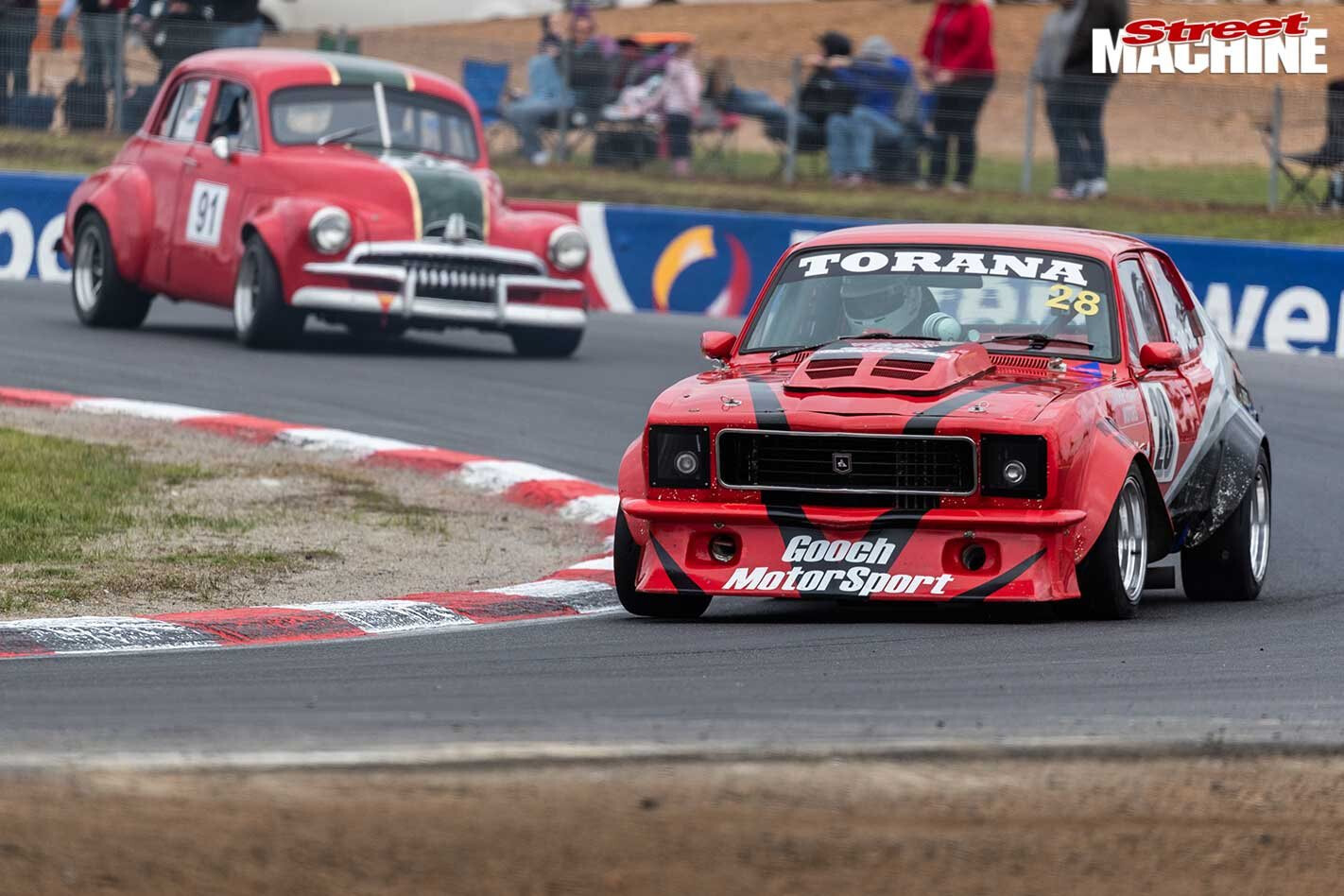
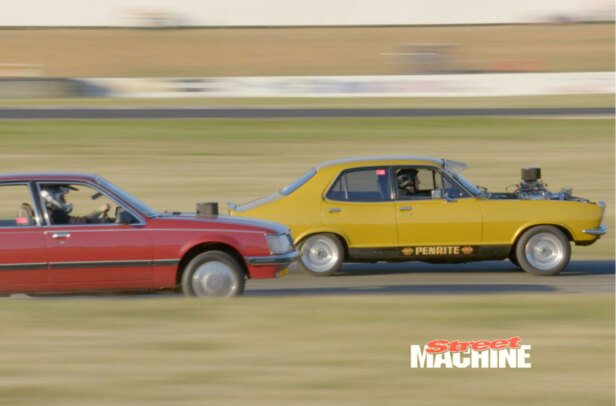
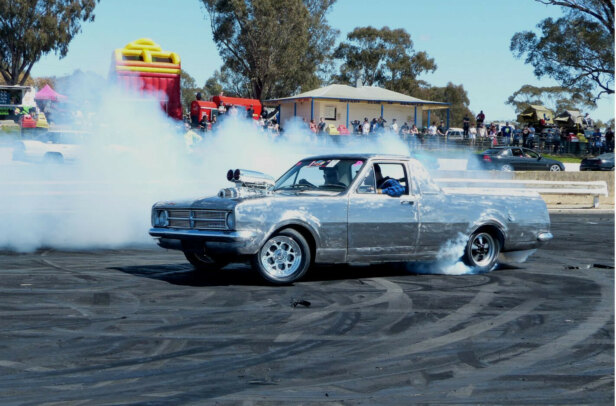
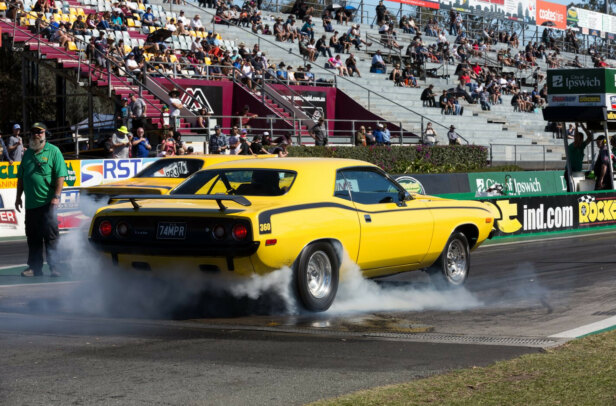
Comments